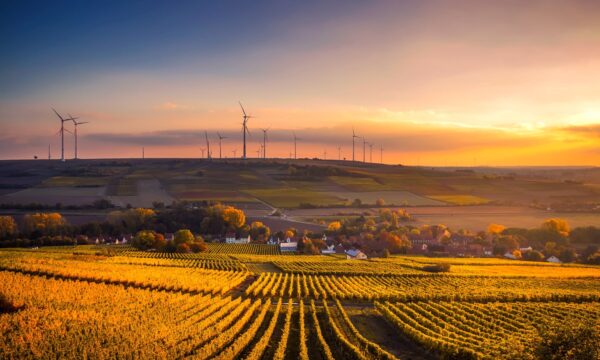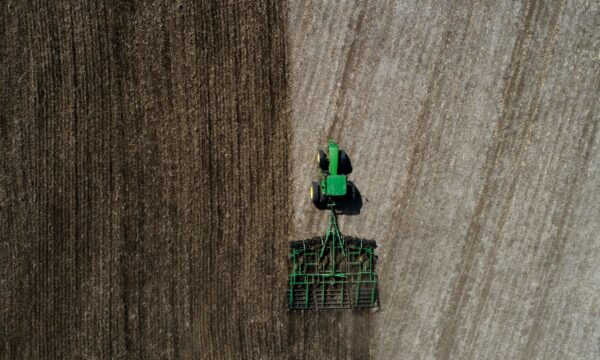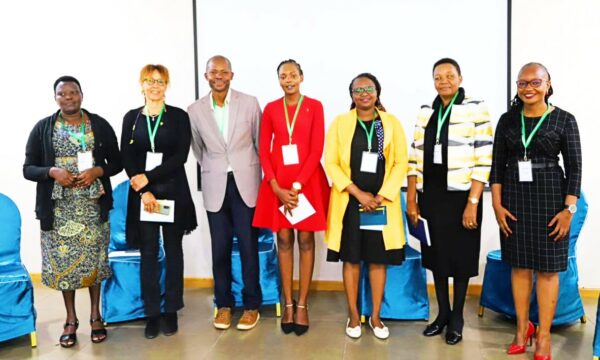
Photo credit: Mahesh Chander
This is the first guest post as part of our Climate Smart Agriculture Week (20 – 24 November 2017)
Despite us humans being the most intelligent among all living organisms it seems we have lowered ourselves to blaming the animals we farm for major environmental concerns, including; climate change, water depletion and pollution, land degradation and soil erosion, deforestation, threats to biodiversity and impacts of excessive material and energy use. Should they be held responsible?
The FAO says livestock is a major threat to environment, yet I would say, this is only the case because people are not smart enough to make livestock rearing and agriculture climate smart. We are the culprits.
Many people are trying many different things to make agriculture, including livestock rearing, climate smart. My organization, the ICAR- Indian Veterinary Research Institute (IVRI) have been working to make agriculture climate smart via National Innovations on Climate Resilient Agriculture (NICRA). Under this project, out of the several institutes of ICAR, 5 are exclusively researching how livestock species like cows, sheep and goats, can withstand climate impacts. They have identified two issues; first, animal rearing negatively impacts climate, and second, animals can face the challenge of adverse climate. Both these problems need smart solutions, from us humans. Can we address these issues smartly?
I recently wrote, it’s not the livestock, but we humans can make the much needed difference in saving the environment. Animals degrade environment, because we allow it to happen. Animals get stressed and suffer due to adverse climatic conditions because we don’t know how to protect them. In both ways, we are responsible, not the animals per se.
Owning 11.6% of the world’s livestock, India’s livestock sector is one of the largest in the world. India is the number one milk producer in the world too. But livestock production in the country is also criticized for being one of the poorest in terms of per animal productivity. Despite this, livestock remains a source of food and livelihood for India’s millions of poor. Truly, livestock is a lifeline for farmers in the subcontinent.
While livestock constitutes an integral component of India’s agriculture sector, it is also a major source of Greenhouse Gas (GHG) emissions. Experts say rearing cattle causes more greenhouse gas emissions than driving cars. Luckily now, it is possible to reduce the GHG emissions by following efficient rearing practices. The FAO says, GHG emissions from livestock can be cut by 30% using these practices. Good news indeed, but more action is needed.
So long as they are hungry the poor are little concerned with climate change, since for them, getting food is the first priority. So how do we reduce livestock numbers while increasing the incomes of those reliant on them? Can we think of having fewer animals with better productivity and climate compatible production systems? Yes, this is important and possible too. We can improve our production systems by making them efficient; we are working hard on tackling these questions.
A large number of projects and programmes funded by The World Bank, FAO, IFAD and other donor agencies are at various stages of implementation in India to improve the resilience of agriculture against the vagaries of nature.
Recently I discussed ways to make agriculture, including animal husbandry, resilient to agriculture, suggesting that we can look for knowledge management strategies to share information rapidly in this area. Some of the actions which are needed in livestock, include: choosing a species and breed which is well adapted to the region, reduce the number of low producing animals by improving the efficiency of animal breeding programmes and follow integrated farming systems with good diversity of plants and animal species in the farm. The feeding and sheltering of animals too are important for efficient livestock keeping. Farmer friendly extension literature and use of social media like WhatsApp groups, TV & Radio programmes can be used strategically to improve farmers’ awareness on climate friendly livestock management.
We all know that the challenges are intensified by agriculture’s extreme vulnerability to climate change. Hotter and shorter growing seasons, reduced rainfall and more frequent extreme weather events are affecting crops and livestock. A recent Berkeley study claims such events to be a major culprit of over 60,000 farmer suicides in few decades in India. It is also seen that wherever livestock rearing is practiced farmers are better protected from the risk of crop failures due to drought or floods.
Livestock offers hope to millions of India’s poor. As livestock protects people, people must protect them from climate change by making production systems more resilient. Can we do it? Yes it is possible and things are happening, small steps taken today might result in big gains one day.
Written by Mahesh Chander, Head, Div of Extension Education, ICAR-Indian Veterinary Research Institute (mchanderivri@gmail.com)
Views and opinions expressed here do not necessarily reflect those of Plantwise or CABI.
1 Comment
Leave a Reply
Related News & Blogs
Horizon scanning for climate-driven pest threats can prevent biodiversity loss
On International Day for Biological Diversity, CABI’s Dr MaryLucy Oronje looks at horizon scanning and pest preparedness – approaches that help prevent the spread of invasive species, a major threat to biodiversity. Horizon scanning for invasive pests…
22 May 2025





Reblogged this on mahesh6905.